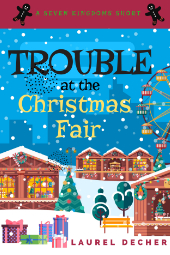
An accomplished novelist friend recently got feedback on a manuscript that was heartbreakingly familiar to me.
“I like it but I’m not loving it.”
Ouch. I know just how that feels.
For years, I worked on a manuscript that repeatedly got the critique that readers couldn’t connect with my main character’s emotions. The feedback was inexplicable and painful because I didn’t have any tools to address it with.
Over time, it started to feel like a personal attack. They were all after me. There was something wrong with me as a writer. I had the wrong feelings. Or I didn’t have feelings. Or I didn’t show them properly. Or something. You know the voices.
A brief non sequitor: getting obsessed with adverbs or gerunds or passive voice or what have you may lead to such controlled language that the emotion is beaten out of it. *cough*
A comment like “I like it but I don’t love it” can hurt so much. But they don’t have to. It might be time to let your story out to dance or skate or sing. Here are three mini-stories that helped me see emotional reactions in a whole new light.
1. A musical interlude: One day in high school, I was practicing a piece of music in the empty band room and the band director walked through and tossed off a comment about playing with more feeling: “It’s okay. You must have just gotten that piece.”
I played a line or two again for him, putting my feelings into the music. He shook his head.
Puzzling.
My feelings were evidently wrong. But how can a person fix their feelings?
Now I realize he wasn’t asking me to feel the music. He wanted me to use technical skill to let the listener feel the music.
2. A skating interlude: Years ago, I read an autobiography of a couple whose skating pair routines moved audiences to tears. In My Sergei, Yekaterina Gordeyeva writes about the demands of creating an emotional experience for the audience. While performing, they were working far too hard to be feeling all mushy.
Look at all the technique to communicate emotion in this pairs skating routine. Or this one with a stronger female lead and lots of passion. Or this one based on Rodin’s The Kiss and skated by Gordeyeva and Grinkov.
(Thanks to Susan Gilbert-Collins for reminding me of the skaters’ names!)
3. Vanessa Van Edwards researched which TED talks go viral. She noticed that two excellent talks, released at the same time of year, found completely different success. One found a small audience and the other exploded.
Talks that went viral had LOTS more gestures than the ones that didn’t. The number of gestures are a measure of the speaker’s commitment to his or her topic and to the desire to communicate it to the audience.
They are also a measure of the speaker’s skill.
Gestures, body language, and words that match communicate much more.
Communicating emotion in a story is a skill. The novelist’s craft includes so many ways to move the reader: foreshadowing, characterization, story structure, dialogue, body language. So if you get this feedback, reach for your tools.
In next week’s post, I’ll recommend some brilliant toolboxes you’ll love.
What about you: Have you gotten feedback that stumped you for a while? How did you handle it? Or have you got favorite tools to add feelings to your WIP? Go ahead and share in the comments.
_______________
If you’d like to stay in touch, sign up for my Reader’s List. Once a month, I recommend a new middle grade book, and share story-related freebies, and/or related blog posts. If it’s not your thing, you can unsubscribe at any time.
Save
Save
Save
Save
Save
Save
Save
Save
Save
Save
Save
Save
Save
Save
Save



